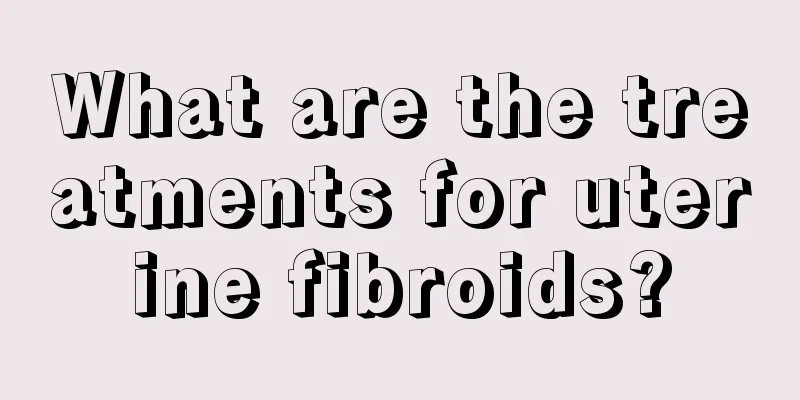What are the treatments for uterine fibroids?

|
Uterine fibroids are the most common benign tumor in female organs. This type of tumor is also very common in the human body and is called uterine tumor. Many friends may find this type of tumor very scary. In fact, the following article will introduce how to treat it. There are many traditional surgical methods for uterine fibroids, including total hysterectomy, subtotal hysterectomy, myomectomy, uterine artery embolization, and the approaches include major invasive laparotomy, minimally invasive hysteroscopy and interventional embolization. These methods have their own advantages and disadvantages, and the appropriate method should be selected based on the patient's specific situation. A. The advantage of hysterectomy is that since the uterus is removed, there is no need to worry about new uterine fibroids. There are many adverse effects after losing the uterus: surgical removal itself is a harmful treatment; anesthesia accidents may occur during the operation; surgical complications such as intestinal adhesions may occur after the operation; pelvic relaxation occurs; in addition, the ovaries lack blood supply from the ascending branch of the uterine artery, which makes them prone to premature aging and early menopause, which may affect women's sexual life and even cause personality changes in some women. B. The advantage of minimally invasive treatment is that the uterus can be preserved, scars are small, and trauma is less. Laparoscopic treatment is more likely to recur, with 1/3 of patients requiring another surgery. There is a risk of massive bleeding and damage to surrounding organs during the operation, and side effects such as scars and intestinal adhesions after the operation. Uterine artery embolization therapy may cause complications such as fever, pain, pelvic infection, embolism of normal organs, and impact on sexual function after surgery; it also has the effect of X-ray radiation. There is no need to worry too much about uterine fibroids that may appear in life. Most uterine fibroids occur in adults between 40 and 50 years old. If they are treated promptly in the early stages to prevent tumors from occurring, the lesions can be cured. |
<<: Uterine transplant surgery and treatment
Recommend
Stem cell research: Breaking through ethical dilemmas and exploring the future of medicine
A visual representation of the process of SCNT [2...
Detailed process of painless abortion surgery
Sex is the sublimation of the feelings between me...
Can I have a natural birth if I am short of oxygen? Why do doctors recommend pregnant women to take oxygen?
The fetus obtains oxygen and nutrients from the m...
Are visible blue veins in the breasts normal?
When many women examine their breasts themselves,...
How to prevent calf cramps in pregnant women
Calf cramps in pregnant women are quite common du...
Canalys: Global smartphone shipments will reach 1.22 billion units in 2024, a year-on-year increase of 7%
According to the latest research from Canalys, th...
What are the benefits and functions of bighead carp head soup? How to make silver carp head soup delicious
Fish head soup is a kind of soup made with fish h...
30 days pregnant, my stomach feels hard when I walk
There will be problems of one kind or another dur...
Simple and effective acupoint massage method for dysmenorrhea
Dysmenorrhea is a disease that many women have ex...
What is the reason why women always cough?
Although everyone will cough, those who are physi...
What causes leg cramps in late pregnancy?
Having a baby is a truly happy thing, but mothers...
What does the Möbius strip mean? What does the Möbius strip represent in love?
The Taiwanese drama Miss You is very popular rece...
Can I still use hormones while taking pirfenidone?
Pirfenidone is a specific drug used to treat pulm...
What are the symptoms of severe cold and dampness in women?
In daily life, severe body cold and dampness is a...
Causes of female urethral dilation
Everyone's physical condition is different. T...









